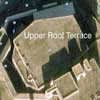Aesthetic Overhead Line Structures Design Competition, UK Rail Network Architecture Contest
Aesthetic Overhead Line Structures Competition
UK Rail Network Architecture Competition
9 Dec 2013
Aesthetic Overhead Line Structures Ideas Competition
Launch of International Design Ideas Competition
Aesthetic Overhead Line Structures for the UK Rail Network
9 December 2013 – RIBA Competitions are delighted to announce the launch of a new international ideas competition which asks competitors to consider new, aesthetically pleasing designs for the gantry and cantilever structures on the UK rail network which could play a part in the way Britain’s railway implement future electrification schemes.
The rail industry’s Enabling Innovation Team (EIT), which forms part of the Future Railway programme, are the competition promoters in conjunction with HS2, and the competition itself is funded by Department for Transport.
The competition will follow the Small Business Research Initiative (SBRI) process (see http://www.innovateuk.org/sbri for more information) and development funding will be available for shortlisted designers.
Birmingham New Street Railway Station, UK (illustration purposes only):

The competition is open internationally to architects, engineers and designers. Team and multi-disciplinary entries are encouraged.
The Judging Panel includes Martin Knight of Knight Architects as the RIBA Adviser and Mark Whitby, Davies Maguire + Whitby, Structural Engineer.
Concept designs submitted digitally are required for the initial application stage with up to 10 entries shortlisted. Shortlisted designers will then proceed to the first stage of the SBRI programme and have up to £15,000 each available to fund the next stage of development of their scheme which will include producing a scale model of their design.
David Clarke, Director of EIT said: ‘I’m delighted to be working with HS2 and RIBA on this exciting competition. HS2 and increased electrification both support rail’s need to efficiently accommodate more capacity. This is an opportune moment, ahead of HS2 being physically built, to look at the feasibility of improving the aesthetics of overhead line electrification when creating new infrastructure.’
Technical Director of HS2 Ltd, Professor Andrew McNaughton, said “The new North-South network will free up much needed capacity on our crowded railways, improve transport connections between our biggest cities and act as an engine for economic growth. This is a transport system for the 21st century that will last until the 22nd century and we want it to be the very best in both performance and design. I look forward to seeing the innovative ideas that I’m sure this competition will deliver.”
For further details and to enter please visit the competition website at: www.ribacompetitions.com/ols. The closing date for design submissions is 29 January 2014.
Aesthetic Overhead Line Structures Competition – Background
RIBA Competitions
RIBA Competitions delivers variety, inspiration and value through expertly run competitive selection processes. For further details visit www.architecture.com/competitions
High Speed Rail
• The Government gave the go-ahead for a UK High Speed Rail network – called High Speed Two (HS2) – on 10 January 2012.
• HS2 will be a Y-shaped rail network providing direct, high capacity, high speed links between London, Birmingham, Leeds and Manchester, with proposed intermediate stations in the East Midlands (Toton) and South Yorkshire (Sheffield Meadowhall). There will also be direct links to the Continent via the High Speed 1 (HS1) line.
• HS2 will improve capacity across the rail network, shorten journey times between Britain’s major population centres, boost the economy and create thousands of jobs.
• HS2 will be built in two phases. The line between London and the West Midlands and a connection to High Speed 1 are expected to open in 2026 (HS2 Phase One), followed in 2032-33, by the onward legs to Manchester and Leeds.
• The target price for delivering Phase One of HS2 is £17.16 billion pounds (2011 prices). This is the base price of the latest estimate of the cost of Phase One, £15.6bn, plus a contingency allowance of 10%, and also takes into account the design and environmental changes to improve the scheme, many of which were set out in the design refinement consultation that launched in May 2013.
• Overall funding for Phase One has been set at £21.4 billion, including contingency of around £5.7bn. It is expected that the level of contingency will reduce over time.
• Overall funding for Phase Two has been set at £21.2 billion, including contingency of £8.7bn which, as with Phase One, it is expected to reduce over time.
• The total for the route is therefore £42.6 billion, including £14.4 billion of contingency.
• Rolling stock costs (the cost of the trains themselves) are currently estimated at £7.5bn, including £1.7bn of contingency.
• Over the period of construction the cost of HS2 will be less than 0.15% of GDP.
About HS2 Ltd and its role.
• HS2 Ltd is the company responsible for developing and promoting the first phase of the high speed rail network from London to the West Midlands. It is undertaking the engineering, design and environmental work for this.
• Parliament will need to give permission to build and operate HS2 through a specific type of bill, called a hybrid bill. The bill for the first phase of HS2 was deposited on 25 November. HS2 Ltd is responsible for the work to enable the Department for Transport to deposit a hybrid bill with Parliament by the end of 2013.
• In 2012, HS2 Ltd submitted proposals to the Secretary of State for the second part of the network from the West Midlands to Leeds and Manchester. The Government announced its initial preferred route to Leeds and Manchester on 28 January 2013. The initial preferred route for this second phase of the network is currently out for consultation. The consultation will close on 31 January 2014.
• HS2 Ltd is a company wholly owned by the Department for Transport (DfT).
About the Enabling Innovation Team
The Enabling Innovation team is one of the delivery activities under the Future Railway umbrella, on behalf of the cross-industry Technical Strategy Leadership Group (TSLG). The team has been set up by the rail industry to accelerate the uptake of innovation. Our mission is to offer support to practical cross-industry demonstrator projects, but also seeking out innovative ideas and proposals from across the industry. Our approach is to: understand the challenges that industry faces; connect potential innovators with these challenges; and, where necessary with potential funding. The team is hosted by RSSB, and reports into TSLG, and is supported by the Rail Delivery Group, RSSB’s Board as well as the Department for Transport.
Aesthetic Overhead Line Structures Design Competition information from RIBA Competitions
Location:Carlisle, UK
UK Architecture Competitions
Bishop Edward King Chapel Competition, Oxfordshire, England

picture from architect
Bishop Edward King Chapel Competition
Living Architecture – A Room for London, England

picture from organisers
Queen Elizabeth Hall Design Contest
Hastings Pier Architecture Competition, England – Design Contest Relaunch

photo : Barry Reid
Hastings Pier Competition
Guy’s Hospital Architecture Competition, England

photo © Nick Weall
Guy’s Hospital Architecture Competition – Rogers Stirk Harbour win
Aberdeen City Garden Design Competition, Scotland

image of competition site
Aberdeen Architecture Competition
Building Competitions : Archive
Comments / photos for the Aesthetic Overhead Line Structures Design Competition page welcome
Aesthetic Overhead Line Structures Ideas Competition





